Table of Contents (click to expand)
The planet’s continents cannot sink into the molten magma within the earth. This is mainly because the mantle, which is solid, lies beneath the Earth’s oceanic and continental crusts.
You may recall from your high school science class that Earth is made of three layers, namely the crust, mantle and core. However, the innermost layer, the core, is molten. So is it possible that the continents, which are basically floating atop a molten surface, might one day sink into it?
Let’s investigate this terrifying prospect!
Layers Of Earth
The main layers of our blue dot include the crust, mantle, and core.
The crust is the outermost layer of the Earth. It is mainly made of three types of rocks: Igneous rocks—formed from the solidification of lava; Sedimentary rocks—formed from the deposition of particles and minerals; and Metamorphic rocks—formed from the transformation of igneous and sedimentary rocks. The crust is home to rocks, soil, and the seafloor, which make up the familiar environment in which we live.
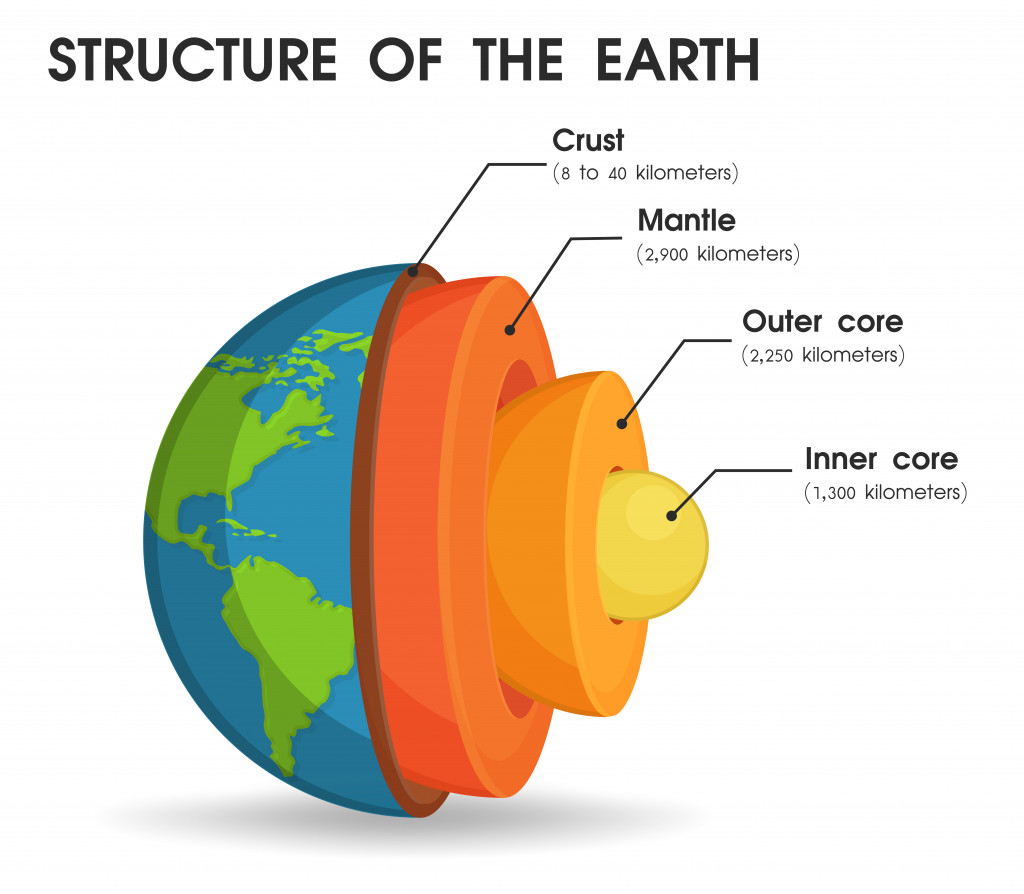
The next layer is the mantle. The layer below the crust, the mantle is comprised of iron, silica, and magnesium. This layer is perceived as lava by most people, but it is actually a rock. This rock ‘flows’ due to tremendous pressure and heat.
The innermost layer of the Earth is called the core. This layer is segregated into the outer core (fluid) and the inner core (solid). The outer core is composed of molten rocks and metals at temperatures as hot as the sun’s surface! The Earth’s inner core is a solid ball of metal. You might wonder why this is solid, whereas the outer core is molten liquid. Well, the pressure in the Earth’s inner core is so high that, despite the incredibly high temperatures, it remains solidified.
From the information above, it can be deduced that deep below our feet are endless kilometers of lava and extremely hot rocks. Does that mean we’re floating on these layers?! Are the countries and continents really floating?
Also Read: How Do Temperature And Pressure Impact The Formation Of Rocks?
How Do The Continents Float?
There is no sea of molten rock upon which the continents float. The mantle is a substantial layer of solid rock that lies under the continental and oceanic crusts.
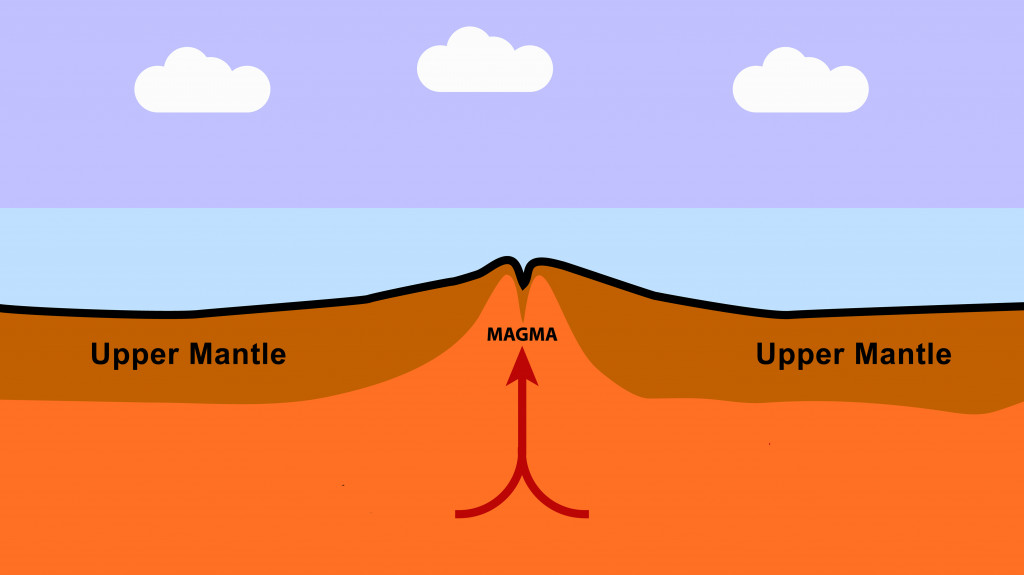
The outer core—a layer of liquid rock—is situated roughly 3000 km under the surface of the Earth and is isolated from it by the thick solid mantle.
Given that knowledge, why do tectonic plates move at all?
The tectonic plates drift because they’re perched on a layer of solid rock that is sufficiently brittle and ductile to flow extremely slowly—almost like a liquid—under convective heat (the flow of a fluid carrying heat from one point to another).
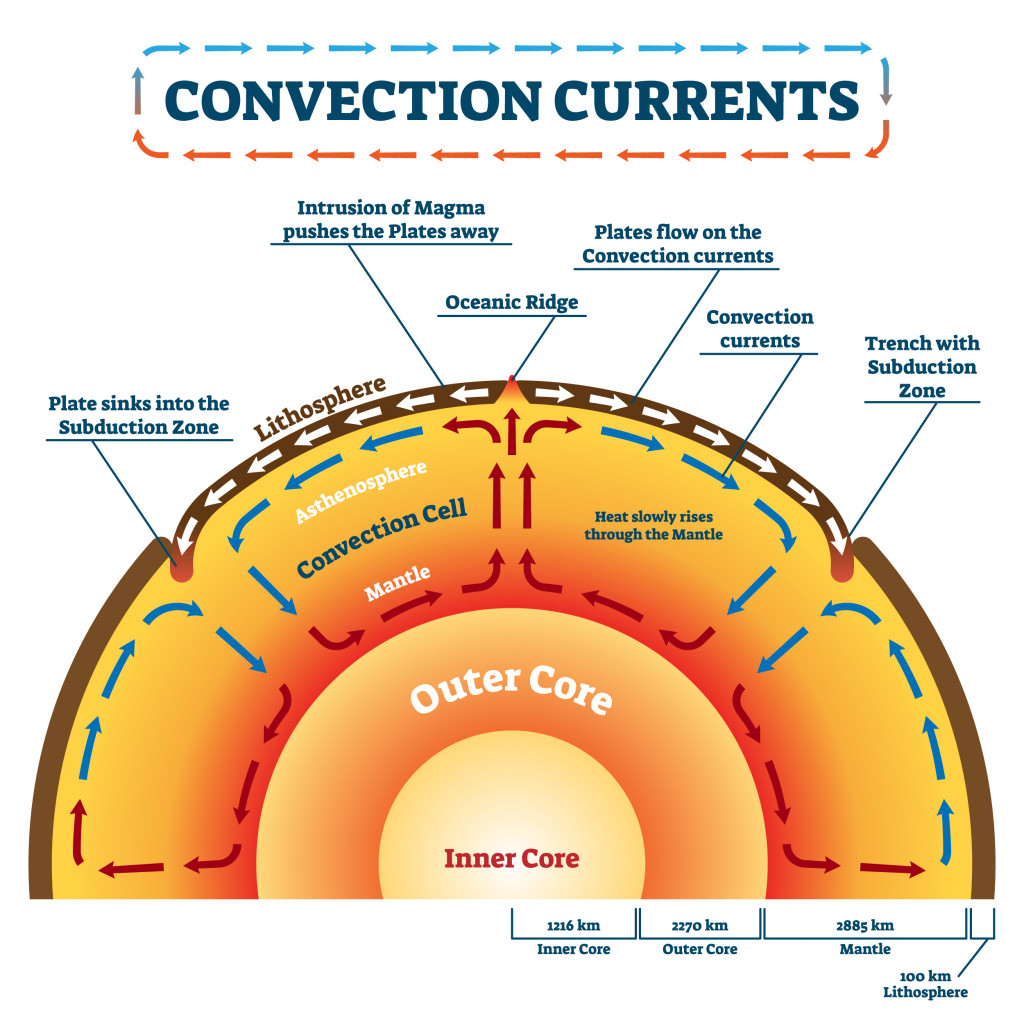
Now, where does lava come from? Isn’t lava just molten rocks? Does the lava from volcanoes travel all the way up from Earth’s outer core?
Well, no.
Instead of emerging from a vast ocean of magma, the molten lava that spews from volcanoes is formed just beneath the volcano. When two tectonic plates come into contact, one may be pushed under the other plate, creating magma, as pressure changes cause the rock to melt. As it does so, the subducted plate pushes water into the upper mantle, lowering the pressure to the point where the rock can melt. Magma forms in specific areas of the mantle near subduction zones. Volcanoes can then be produced as the mantle rises.
Also Read: Mountains Are So Big And Heavy… Why Don’t They Sink Into The Ground?
What Are Subduction Zones?
If either or both of the tectonic plates are composed of oceanic lithosphere, a subduction zone will develop due to the collision. The oceanic plate will eventually go back down into the mantle from where it emerged and rise. Basically, the cold oceanic lithosphere gets recycled.
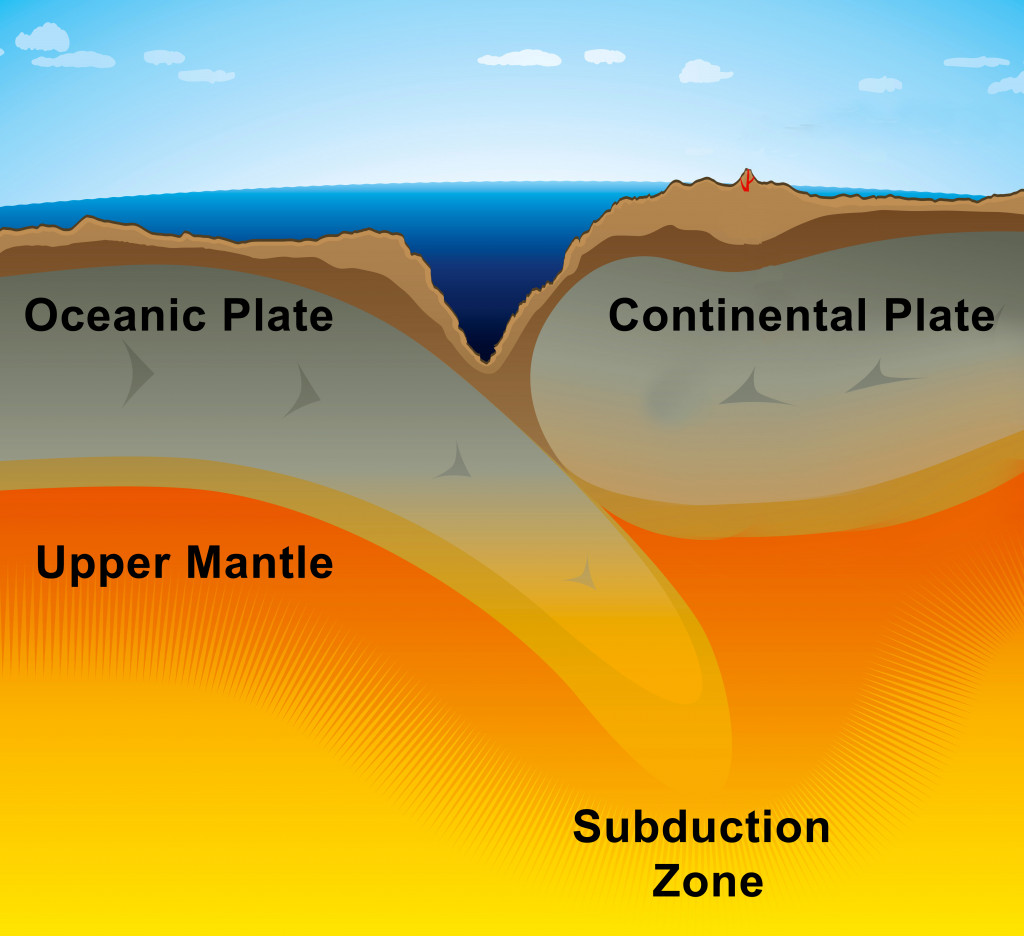
The critical idea here is that magma does not exist as a vast sea of lava immediately beneath the crust, but instead forms in discrete pockets due to tectonic plate movement.
However, if the rocks in the magma experience heat convection, can the crusts also be involved in this?
Also Read: How Are Underwater Volcanoes Formed?
Can The Continents Really Sink?
Continental and oceanic crusts differ in mineral composition, affecting a number of their physical properties, such as density.
The oceanic crust is made of basalt. The underlying mantle partly melts, then crystallizes, forming the rock known as basalt.
Basalt has a density of around 3 grams per cubic centimeter. Peridotite, the material that makes up the mantle, has a density of roughly 3.3 grams per cubic centimeter. The oceanic crust will therefore be on top of the mantle when it partially melts and re-crystallizes as basalt.
Because continental crust is created through several cycles of partial melting, it has an even lower density than oceanic crust—roughly 2.7 grams per cubic centimeter.
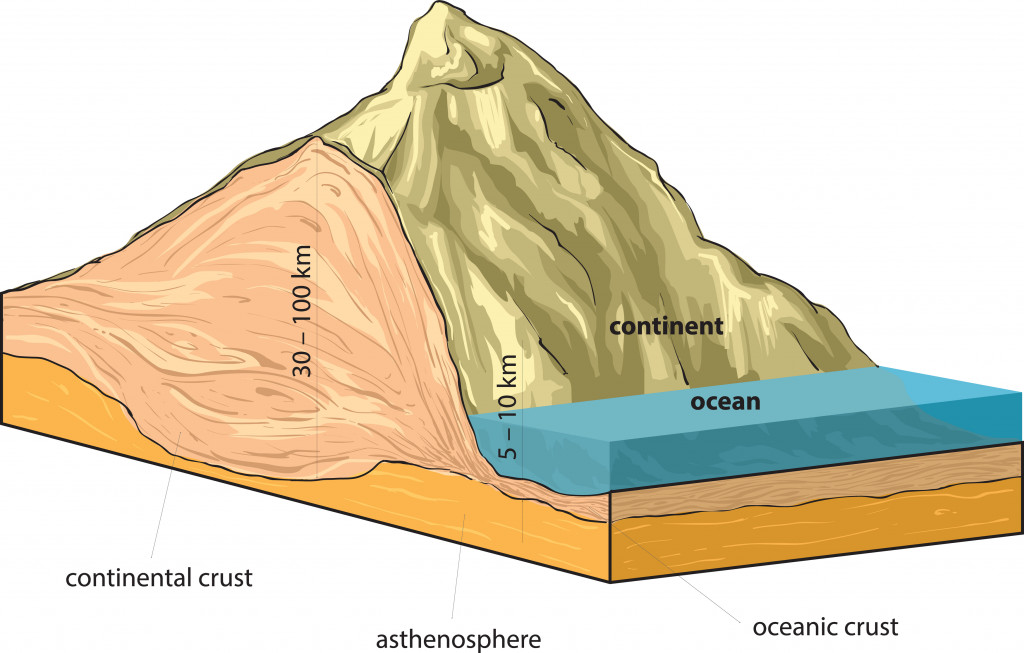
The oceanic plate, however, experiences subduction because it is denser. In other words, the oceanic plate dips beneath the continental plate. However, not to worry, as it is recycled and immediately resurfaced.
All in all, neither continental nor oceanic crust can sink into magma, so you can safely remove that from your list of existential worries!
How well do you understand the article above!

References (click to expand)
- Earth's Interior | National Geographic. National Geographic
- The Earth's Crust. The University of Illinois Urbana-Champaign
- What are metamorphic rocks? | U.S. Geological Survey. The United States Geological Survey
- What keeps the continents floating on a sea of molten rock?. West Texas A&M University
- What are the oceanic and continental crusts made out of and how did they "float" on the asthenosphere instead of sinking? - UCSB Science Line. The University of California, Santa Barbara
- core - National Geographic Society. National Geographic
- Subduction Zones. Columbia University
